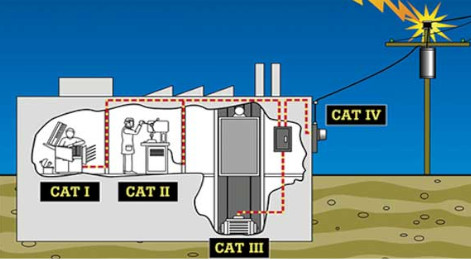Electrical Testing & Safety Standards
Electrical Testing & Safety Standards
July 15th, 2020:
Electrical safety testing is extremely important for ensuring safe operating standards for all products that use electricity. Various governments and agencies have developed strict requirements for electrical products that are sold world-wide. In most markets it is mandatory for a product to conform to safety standards such as UL, CE, CSA, ETL, ISO and so on. To conform to such standards, the product must pass safety tests such as the high voltage test (also called as Dielectric voltage-withstand test or high potential test), Insulation Resistance Test, Ground (Earth) Bond and Ground Continuity Test and Leakage Current Test.
Listed below are some of the more widely known and used electrical standards as well as an explanation of the different categories that products are classified in.

UL (Underwriters Laboratories) is an independent product safety certification organization that has been testing products and writing standards for safety for more than a century. The UL mark on a product means that UL has tested and evaluated representative samples of that product and determined that they meet UL requirements. Products are often re-checked by UL at the manufacturing facility to make sure they continue to meet UL requirements.

The CSA (Canadian Standards Association) mark indicates that a product, process or service has been tested to a Canadian or U.S. standard and meets the requirements of an applicable CSA standard or another recognized document used as a basis for certification. For consumers, the CSA mark provides increased assurance of quality and safety.

A product is marked CE (Conformité Européenne) to show that it conforms to health, safety, environment and consumer protection requirements established by the European Commission.

The ETL Listed mark is an alternative to the UL and CSA marks. ETL testing is conducted by Intertek Testing Services (ITS) and is recognized by OSHA as a Nationally Recognized Testing Laboratory, just as Underwriters Laboratories (UL) and Canadian Standards Association (CSA) are. The ETL mark indicates compliance with over 200 safety and performance standards of both U.S. and Canada.

ISO, the International Organization for Standardization, is the world's largest developer and publisher of international standards. ISO standards add value to all types of business operations, contributing to make the development, manufacturing and supply of products and services more efficient, safer and cleaner. ISO 9001 is an international standard that gives requirements that, if effectively implemented, will provide the consumer with confidence that a supplier can consistently provide goods and services that meet needs and expectations and comply with applicable regulations.

IEC, the International Electrotechnical Commission, is the world's leading organization that prepares and publishes international standards for all electrical, electronic and related technologies. The IEC also manages conformity assessment systems that certify that equipment, systems and components conform to its international standards.

ANSI, the American National Standards Institute, is a private, non-profit organization which administers and coordinates the U.S. voluntary standardization and conformity assessment system. ANSI represents the U.S. in international standards organizations such as the International Organization for Standardization (ISO) and the International Electrotechnical Commission (IEC).

IEEE, the Institute of Electrical and Electronics Engineers, is an international, non-profit, professional organization for the advancement of technology related to electricity. The IEEE is one of the world's leading standards-making organizations and performs its standards making and maintaining functions through the IEEE Standards Association. IEEE standards affect a wide range of industries including: power and energy, biomedical and healthcare, information technology, telecommunications, transportation, nanotechnology, information assurance and many more.
Safety Standards Categories
ANSI, CSA and IEC define 4 measurement categories (CAT) of over-voltage transient impulses (voltage spikes). These CAT ratings are based on how high-energy transient travels through the network resistance of the electrical installation. The CAT ratings help determine what electrical test tools have been designed to withstand voltage transients for the specific job type.
The rule of thumb is that the closer the technician is working to the power source, the greater the danger and the higher the measurement category number. Lower category installations typically have greater impedance, which dampens transients and helps limit the fault current that can feed an arc.

CAT I - refers to protected, electronic circuits
CAT II - covers the receptacle circuit level and plug-in loads
CAT III - covers distribution level wiring. This includes 480V and 600V circuits such as 3-phase bus feeder circuits, motor control centers, load centers and distribution panels. Permanently installed loads are also classified as CAT III, including large loads that can generate their own transients.
CAT IV - associated with the origin of installation. This refers to power lines at the utility connection as well as at the service entrance. It also includes overhead and underground cable runs outdoors since lightning may affect both of these.

